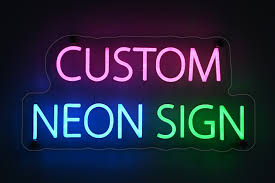Labels without a liner or backing paper are known as linerless or liner-free labels, in contrast to ordinary labels. Generally, liners have a release layer that allows the label to be removed with ease without causing damage to the adhesive underneath, keeping the label affixed to things like envelopes or boxes. On the other hand, linerless label manufacturers have a unique adhesive that allows them to peel away from labels beneath and a silicone release coating on the top layer of the labels. The silicone coating enables linerless labels to function as self-contained liners.
What applications are there for linerless labels?
Linerless labels are in many products and industries due to their flexibility and adaptability. These labels are for permanent and removable labelling, which enables them to meet the demands of many product kinds. It makes them perfect for packaging applications in logistics and warehousing. They are widely employed in several other sectors as well, such as:
Medical & Healthcare
It is for sample labelling, test result recording, and patient record updating. Healthcare personnel may handle patient data, track assets, and mark prescriptions using mobile printers and linerless labels.
Shipping & sailing:
Businesses may handle more orders quickly and inexpensively using linerless labels, which can be printed and applied with barcodes and shipping labels.
Restaurants with Quick Service
Linerless labels can facilitate the expeditious fulfilment of orders required by these firms. They can seal containers or label goods while providing the client with crucial purchase information. Quick-service restaurants may reduce the number of incorrect orders they receive by printing customised orders on linerless labels. It allows them to additionally give their customers information about branding, nutrition, and allergies.
Transportation and Warehousing
Timeliness in these areas is crucial. Linerless labels do not require peeling off the back. So they may be placed more quickly and effectively. Because liner backings tend to tumble to the ground, the absence of one also reduces the risk of slipping. For barcode labels used in asset tracking, inventory management, and commodities transportation, linerless labels are perfect.
Retail & Hospitality
Supermarkets offer another significant industry ideal for linerless labels, as the leading scale and printer support linerless label manufacturers. Fresh food areas, such as the butcher, bread, or deli departments, carry labels without lines. Additionally, printer makers are challenging access to these industries by supporting the integration of linerless labels with e-commerce ordering platforms.
Linerless labels save label waste and make it possible to put future regulatory needs on them because they are often continuous and automatically trimmed to size. They provide the best way to mark inventory quickly while on the go, food items that include dates or allergies.
Conclusion
Each facility will have to make the final decision about the usage of linerless labels. You must consider if linerless labels are appropriate for your business and personnel. They are for staff members who want extremely mobile printing solutions. Nurses, for instance, are big fans of linerless labels since they carry compact, light printers on their hips and use them to mark patient records and prescriptions. For more info please visit the networkustad.






